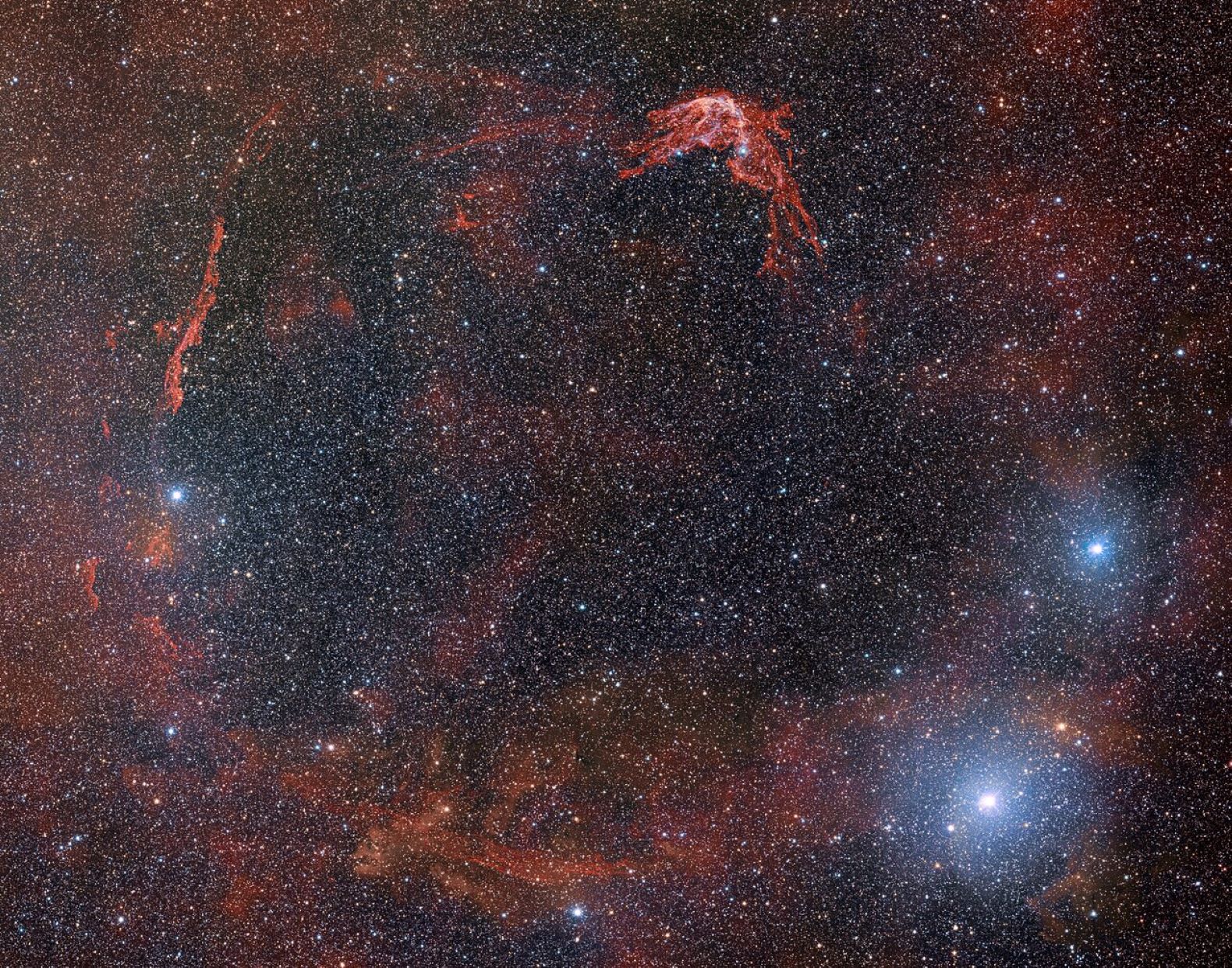
A rare view of the entire supernova recorded for the first time reveals unprecedented detail
More than 1,800 years ago, in the year 185, Chinese astronomers recorded what they called a “guest star” after a bright new source appeared in the night sky. Recently, astronomers working with the National Science Foundation’s (NSF) DECam (Dark Energy Camera) were able to capture a new image that highlights the ghostly remnants of this first recorded supernova, including the debris ring.
In 185 AD, Chinese astronomers recorded the appearance of a new, very bright star, the “guest star”. The researchers pointed out that it was shining like a star and did not seem to move in the sky, arguing that it was a comet. In addition, observers note that it takes about eight months for the star to fade, consistent with recent observations of supernovae.
This historic supernova, which astronomers now call SN 185, occurred more than 8,000 light-years away in the approximate direction of Alpha Centauri, between the planets Circinus and Centaurus.
Recently, the resulting structure of this supernova, RCW 86, was imaged by the Dark Energy Camera (DECam) mounted on NSF’s NOIRLab Víctor M. telescope. This rare and extraordinary image helps shed light on how the supernova remnant has evolved over the past 1,800 years.
Historical supernova dated with more accuracy
DECam’s astonishing wide-field view allowed astronomers to create this unprecedented view of the entirety of the supernova remnant as we see it today, not least because of its ability to capture much of the sky at once without compromising the level of detail.
If the link between RCW 86 and SN 185 is now well established, this was not always the case. For decades, astronomers believed that it would take about 10,000 years for a conventional supernova—a supernova in which a massive star erupts material as it explodes—to collapse to form the structure we see today. This would make the structure much older than the supernova observed in the year 185.
This initial estimate came largely from measurements of the size of the supernova remnant. But a 2006 study found that their large size was instead due to a very high rate of expansion, the mechanism of which was not explained at the time.
Specifically, by examining the energy distribution of X-rays, the principle of spectroscopy, the team discovered that most of the X-ray emissions were caused by high-energy electrons passing through a magnetic field. This is a well known process that usually results in low energy radio emission. However, only very high shock velocities can accelerate electrons to energies that allow X-rays to be emitted.
The image from the National Science Foundation (NSF)’s NOIRLab shows soft tendrils that appear to recede from a central point, like the shattered remains of an exploded balloon. This ring of debris is therefore all that remains of the white dwarf star that exploded over 1,800 years ago.
Hence the new 2006 estimate is more consistent with a relatively young age of around 2,000 years, which strengthened the link between RCW 86 and a “guest star” that was observed centuries ago.
The remnants of the supernova are better understood
While a more accurate age estimate has brought astronomers closer to understanding this unique stellar feature, scientists have not yet revealed the mechanism for RCW 86’s rapid evolution. The answer came when X-ray data of the area revealed large amounts of iron, suggestive of another type. From the explosion: a type Ia supernova, he explains communication From NOIRLab of NSF.
This type of explosion occurs in a binary star system when a dense white dwarf — the end-of-life remnant of a star like the Sun — sucks matter from its companion star into the explosion’s critical point. These supernovae are the brightest ever recorded, which explains why the supernova mentioned in the study could be distinguished in 185 by observers of the time, captivated by the sight.
Astronomers now have a fuller picture of the composition of RCW 86. When the white dwarf of the binary system swallowed material from its companion star, its high-speed winds blew the surrounding gas and dust outward, causing a cavity, a kind of empty shell.
Then, when the white dwarf could take no more mass, it violently exploded. Then a variety of nuclear reactions occurred (nuclear capture, decay, fusion, fission) that produced nearly all known chemical elements. The pre-formed cavity provided ample space for the remnants of high-velocity stars to expand very quickly and create the massive features we see today.
Researchers are particularly interested in these types of supernovae. Indeed, their studies provide insight into how these stellar interactions affect the distribution of iron elements in the universe and could give researchers deeper insight into the chemical composition of the universe. Recently, a supernova was also detected in a neighboring galaxy of the Milky Way, providing yet another view of the universe.

“Incurable web evangelist. Hipster-friendly gamer. Award-winning entrepreneur. Falls down a lot.”
